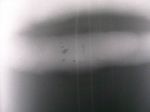Radiography is the most commonly known non-destructive test method. Radiography can be used to obtain permanent image of surface and sub-surface (embedded) discontinuities. The same discontinuities can be radiographed again after a period of service life and the radiographs can be compared to measure the change in the size and shape of the discontinuity. There are numerous applications of radiography in engineering applications.
Some of the common uses are detection of surface and subsurface features of interest in welded parts, castings, forgings, wall thickness measurement, corrosion mapping, detection of blockages inside sealed equipment, detection of reinforcing material in concrete slabs, measuring bulk density of materials, measuring porosity in concrete, etc. The conventional film radiography is the most sensitive test method. On the contrary digital or computed radiography have certain advantages over conventional film radiography.
Digital or computed radiography is faster and have wider latitude of thickness to be radiographed. The required exposer time in digital or computed radiography is much shorter than the conventional radiography. The radiographic images can be stored and compared with greater accuracy for condition monitoring applications.
LMATS holds validated test procedures and NATA accreditation in conventional radiography and performs radiographic examination in accordance with AS 2177, AS 2314, AS 4749, AS 1929, AS 2885.2, ASTM E1032, ASTM E1955, ASME V, Article 2, API 650, AWS D1.1, DIN EN 1435, AS 3507.1, AS 3507.2, ASTM E1030, ASTM E1815, ASTM E1742, ASTM E94, AS 2452.1, AS 2452.2 and similar national and international standards.



